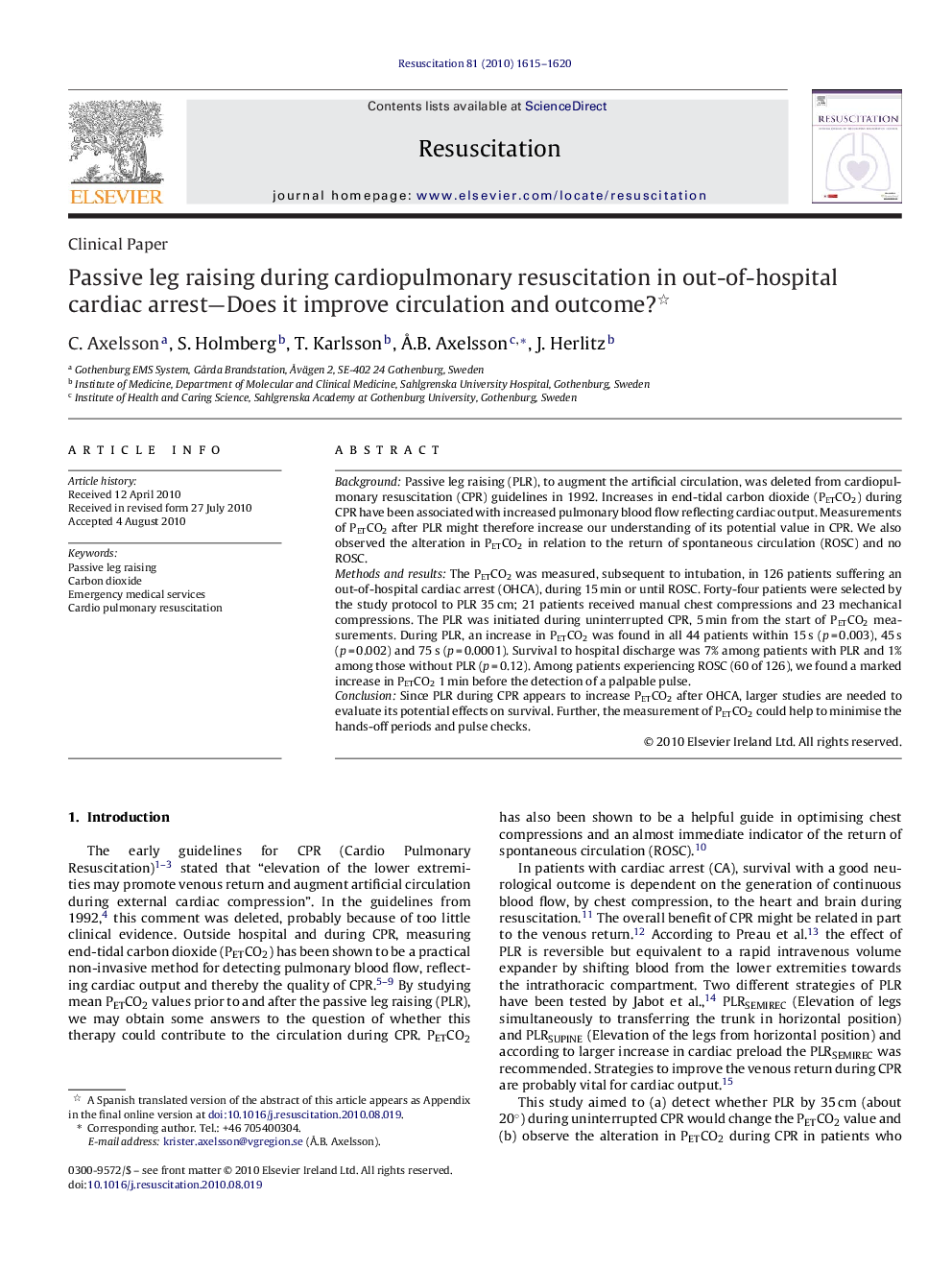| Article ID | Journal | Published Year | Pages | File Type |
|---|---|---|---|---|
| 3009401 | Resuscitation | 2010 | 6 Pages |
BackgroundPassive leg raising (PLR), to augment the artificial circulation, was deleted from cardiopulmonary resuscitation (CPR) guidelines in 1992. Increases in end-tidal carbon dioxide (PETCO2) during CPR have been associated with increased pulmonary blood flow reflecting cardiac output. Measurements of PETCO2 after PLR might therefore increase our understanding of its potential value in CPR. We also observed the alteration in PETCO2 in relation to the return of spontaneous circulation (ROSC) and no ROSC.Methods and resultsThe PETCO2 was measured, subsequent to intubation, in 126 patients suffering an out-of-hospital cardiac arrest (OHCA), during 15 min or until ROSC. Forty-four patients were selected by the study protocol to PLR 35 cm; 21 patients received manual chest compressions and 23 mechanical compressions. The PLR was initiated during uninterrupted CPR, 5 min from the start of PETCO2 measurements. During PLR, an increase in PETCO2 was found in all 44 patients within 15 s (p = 0.003), 45 s (p = 0.002) and 75 s (p = 0.0001). Survival to hospital discharge was 7% among patients with PLR and 1% among those without PLR (p = 0.12). Among patients experiencing ROSC (60 of 126), we found a marked increase in PETCO2 1 min before the detection of a palpable pulse.ConclusionSince PLR during CPR appears to increase PETCO2 after OHCA, larger studies are needed to evaluate its potential effects on survival. Further, the measurement of PETCO2 could help to minimise the hands-off periods and pulse checks.
